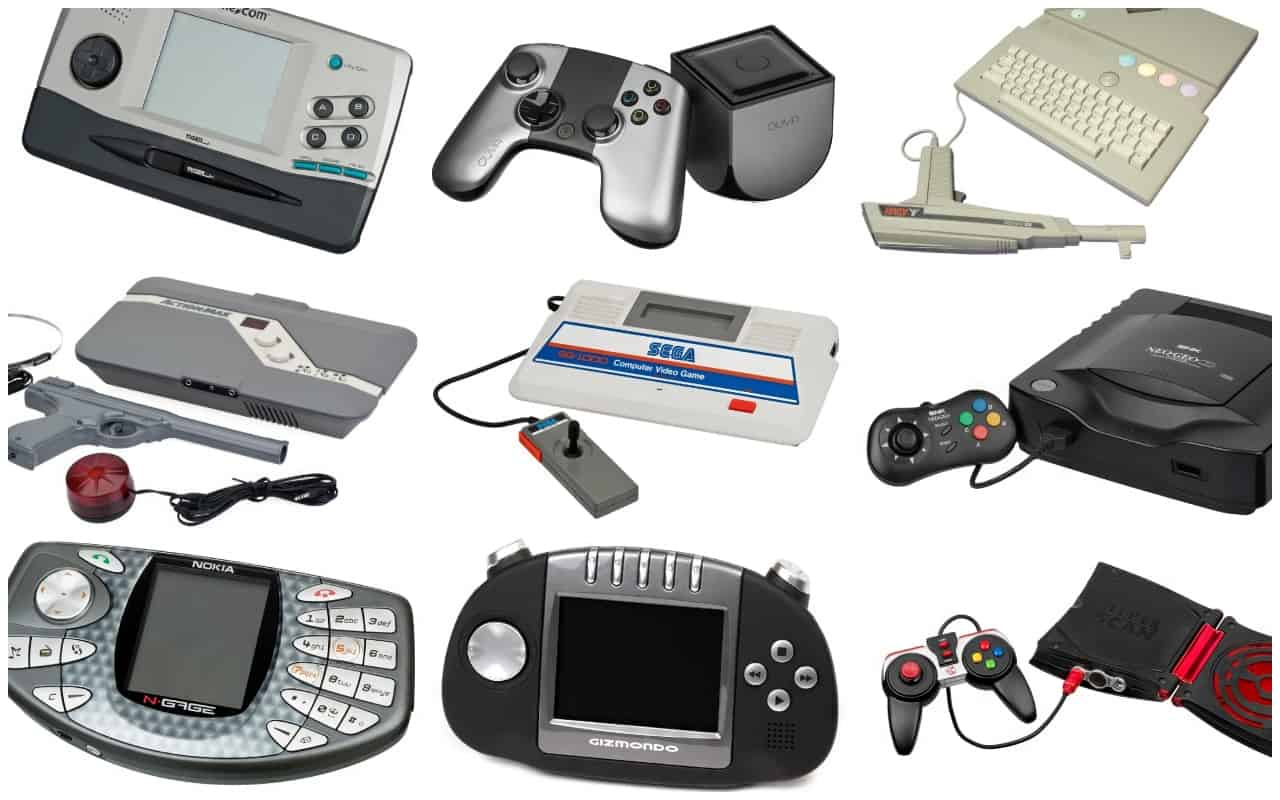Are you tired of the same old gaming consoles that everyone talks about? It’s a little-known fact that there is a treasure trove of video game consoles out there beyond the well-trodden path of Nintendo and PlayStation.
In this article, we’re going to journey through time to discover some of the most unique and obscure game systems you’ve likely never heard of. Get ready for some surprises as we dig into history’s hidden gaming gems!
Key Takeaways
The SG-1000, Atari XEGS, and Action Max are some early consoles from the 1980s that didn’t get famous but now have fans who love their rare games.
The mid-90s had unusual consoles like GoldStar GPI-1200, Capcom CPS Changer, and Neo Geo CD, which were cool, but not many people played them.
Tiger R-Zone and Atari Jaguar CD tried new things in the late 90s but ended up as rare items because not a lot of gamers bought them.
In the 2000s, the Nokia N-Gage mixed games with phone features while Gizmondo and Mattel HyperScan had special tech, but neither became popular.
Zeebo offered simple gaming in Brazil and other places in 2009. Ouya came out in 2013 hoping to help more game makers share their work.
Table of Contents
The Forgotten Era of Video Game Consoles
Diving into the annals of video game history, we stumble upon a treasure trove of consoles that time almost left behind. In this forgotten era, innovative ideas and peculiar contraptions offer us a glimpse into the ambitious spirit that predated our contemporary obsession with an updated list of slot games and virtual reality marvels.
SG-1000 (1983)
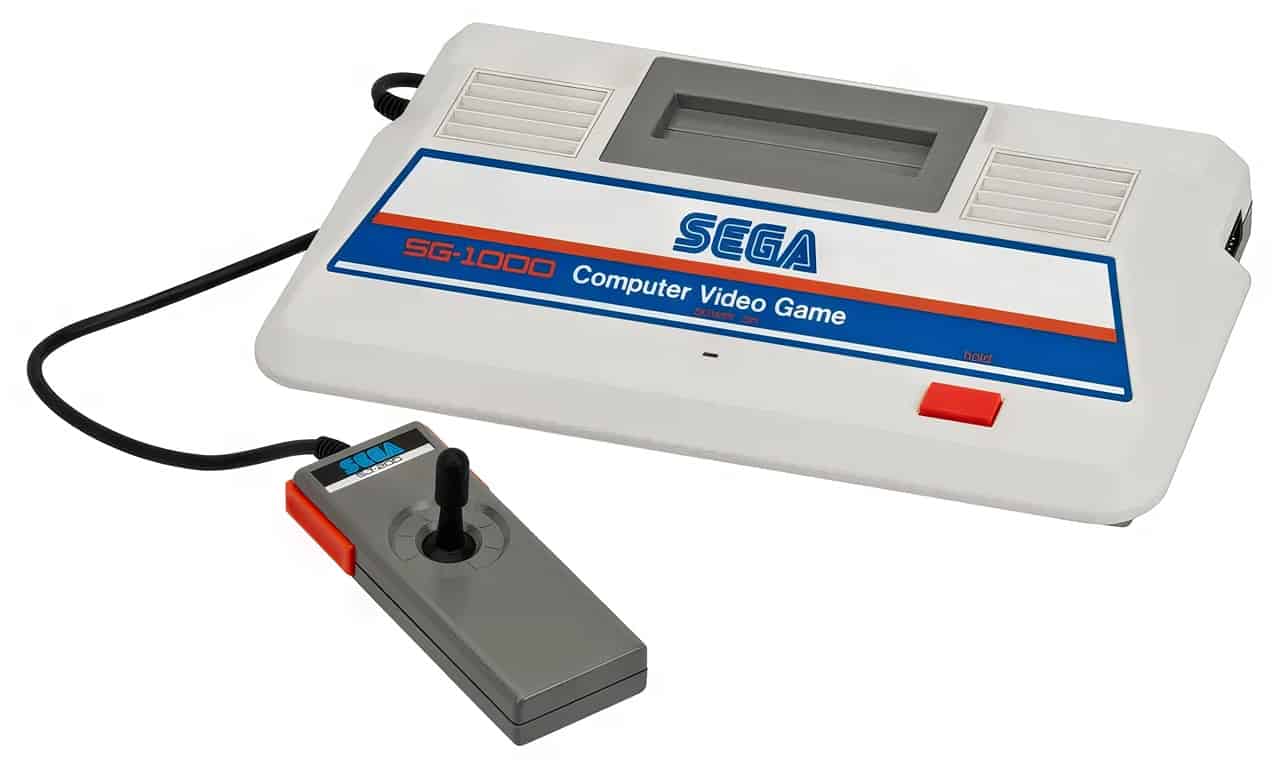
The SG-1000 was Sega’s first leap into the game console market. Back in 1983, while everyone was busy with their Ataris and Nintendos, this little machine quietly made its debut. Not many noticed it then, but today gamers looking for something different find it pretty cool.
The SG-1000 might not have been a hit like the NES, but it sure had some fun games that now count as treasures.
Retro fans are giving the SG-1000 some well-deserved love these days. It’s like finding your grandpa’s old comic book collection in the attic – full of surprises and rare gems! This console came out before Sega became famous with their Master System and Genesis.
So, if you’re digging through gaming history or just want to play something not everyone has heard of, check out what the SG-1000 has to offer!
Atari XEGS (1987)
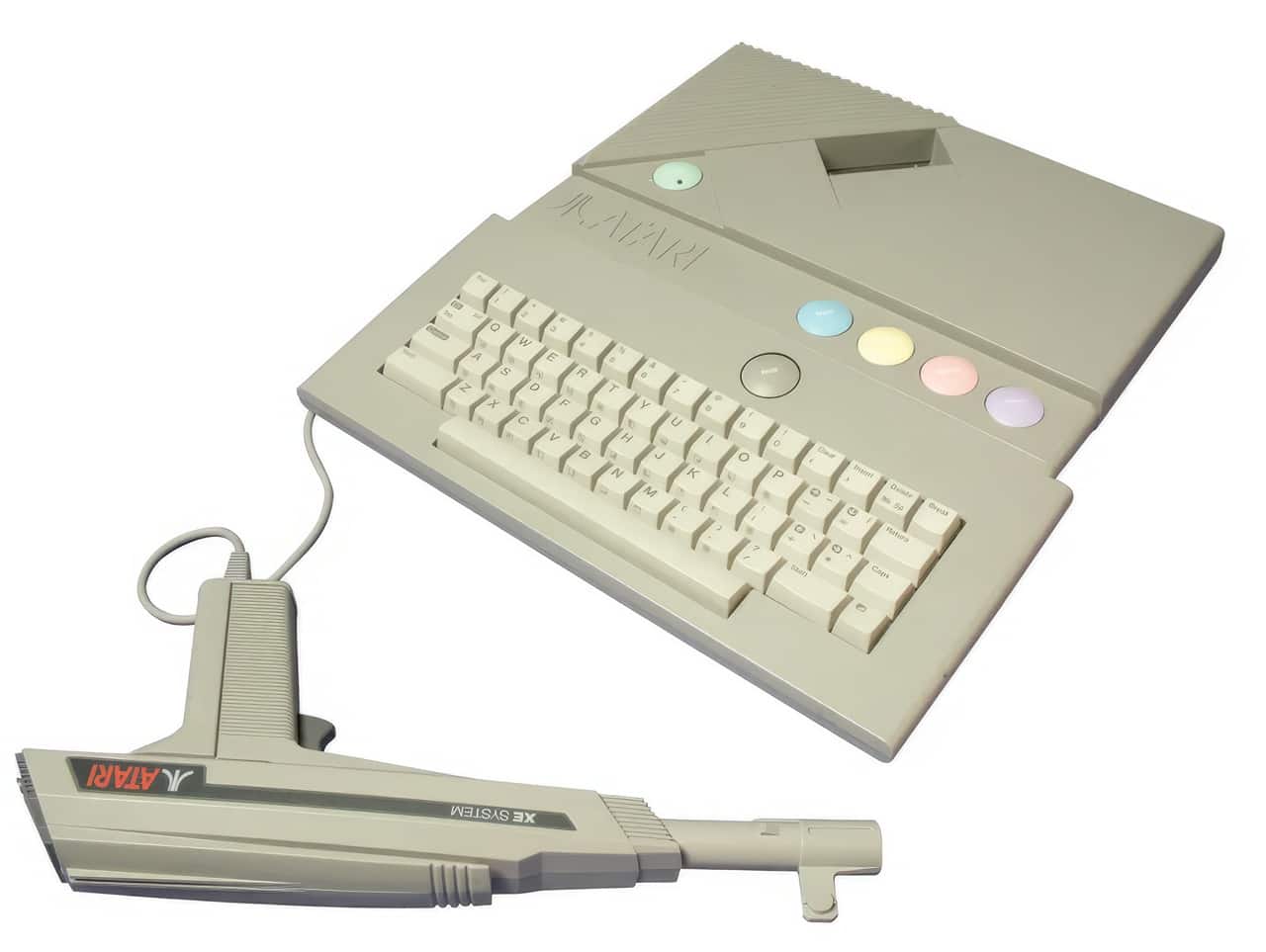
Atari XEGS came out in 1987, trying to make a splash as both a game machine and a home computer. It looked cool with its light gun and detachable keyboard. But it was up against the mighty NES, which everyone loved.
So, not many people bought an Atari XEGS.
This console let players enjoy games like “Missile Command” right away without needing anything extra. You could also turn it into a full computer by adding the keyboard. Still, even with these neat features, it didn’t get famous like other video game consoles of the time.
Action Max (1987)
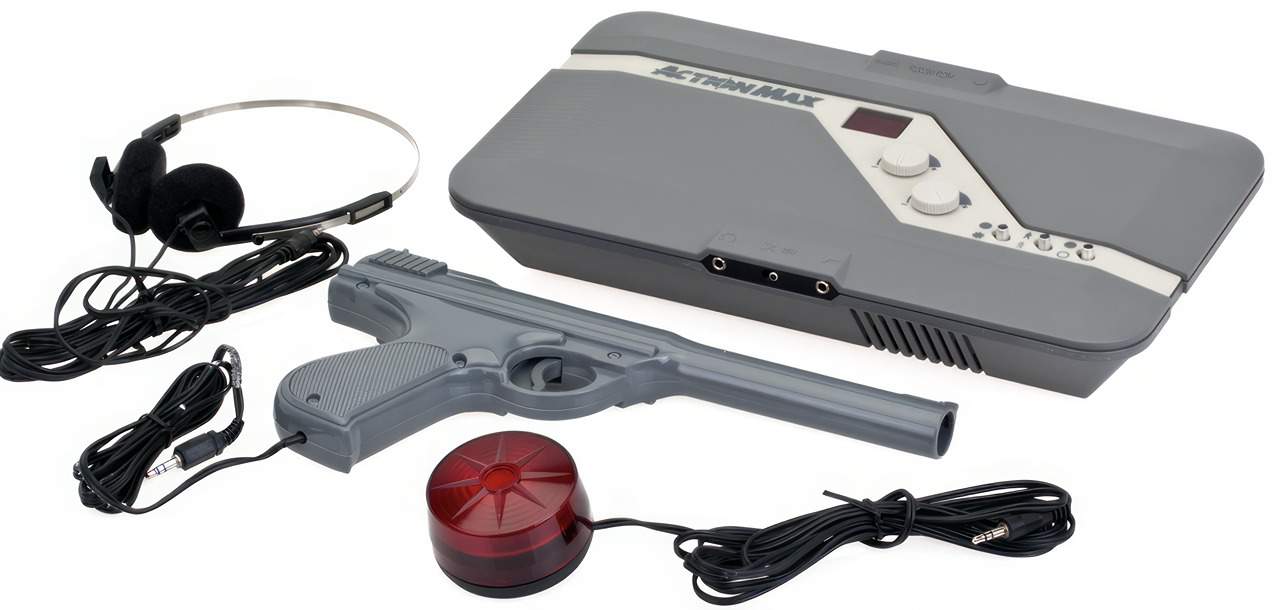
Jumping from the Atari XEGS, another 1987 surprise was the Action Max. This console tried something new, using VHS tapes for its games. Players would pop a tape into their VCR and grab a light gun to start shooting at targets on screen.
It felt like you were part of an action movie! Sadly, not many people bought the Action Max. It didn’t stick around long before they stopped making it. But now, some gamers look back at this odd console with fondness and keep playing its unique games.
They love finding these rare pieces of video game history that most have forgotten.
The Mid-90s Obscure Consoles
Dive into the pixelated past with a time capsule tour of the mid-90s, when consoles were as quirky as they were pioneering. Get ready to unearth the tech treasures that once vied for glory in the shadow of gaming giants!
GoldStar GPI-1200 (1994)
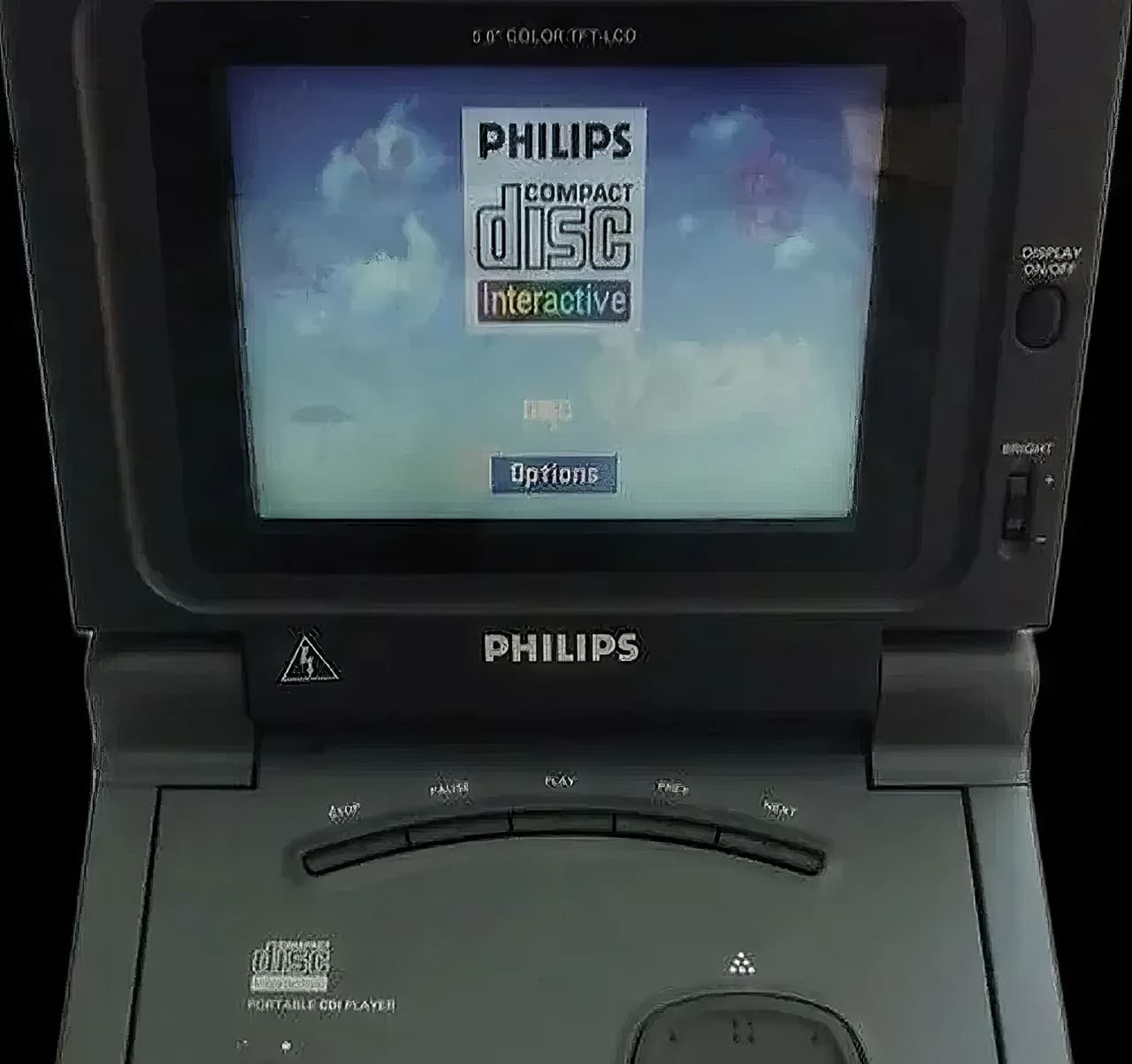
The GoldStar GPI-1200 came out in 1994, but many gamers don’t know much about it. It’s one of those hidden treasures from the past. This console wasn’t on the radar like the Sega Genesis or Super Nintendo were.
The GPI-1200 let players enjoy games using CDs, which was pretty cool back then.
Not a lot of people had this machine in their homes. That makes it really special for those who love finding rare gaming stuff. People usually didn’t see it next to famous consoles at stores.
Now, game collectors and fans who like old-school tech think the GoldStar GPI-1200 is interesting to learn about and play with!
Capcom CPS Changer (1994)
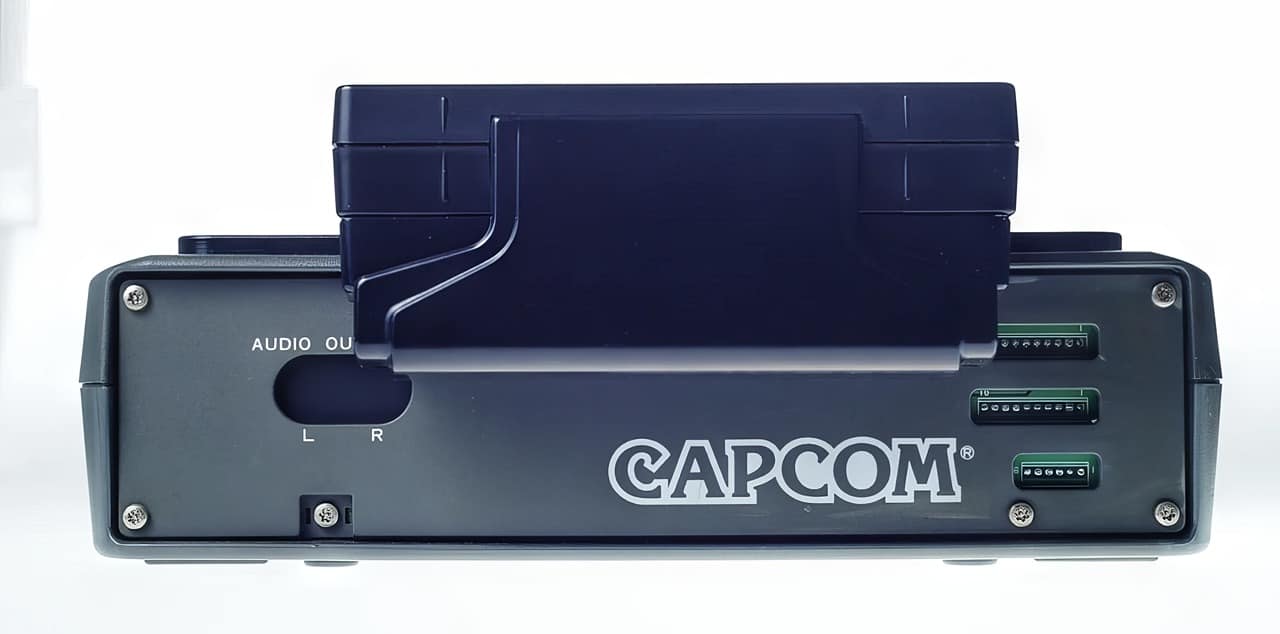
Capcom made a console called the CPS Changer in 1994. This cool machine let people play games like they were at the arcade but in their own homes. Players could slide in big cartridges and get ready to battle it out with top fighting games.
Street Fighter II and Final Fight were some of these great games that came to life on this console.
Collectors today hunt for the CPS Changer because there are not many around. It stands as a special treasure for those who love old-school gaming fun. If you’re into rare finds, this is one piece of gaming history that’s worth checking out!
Neo Geo CD (1994)
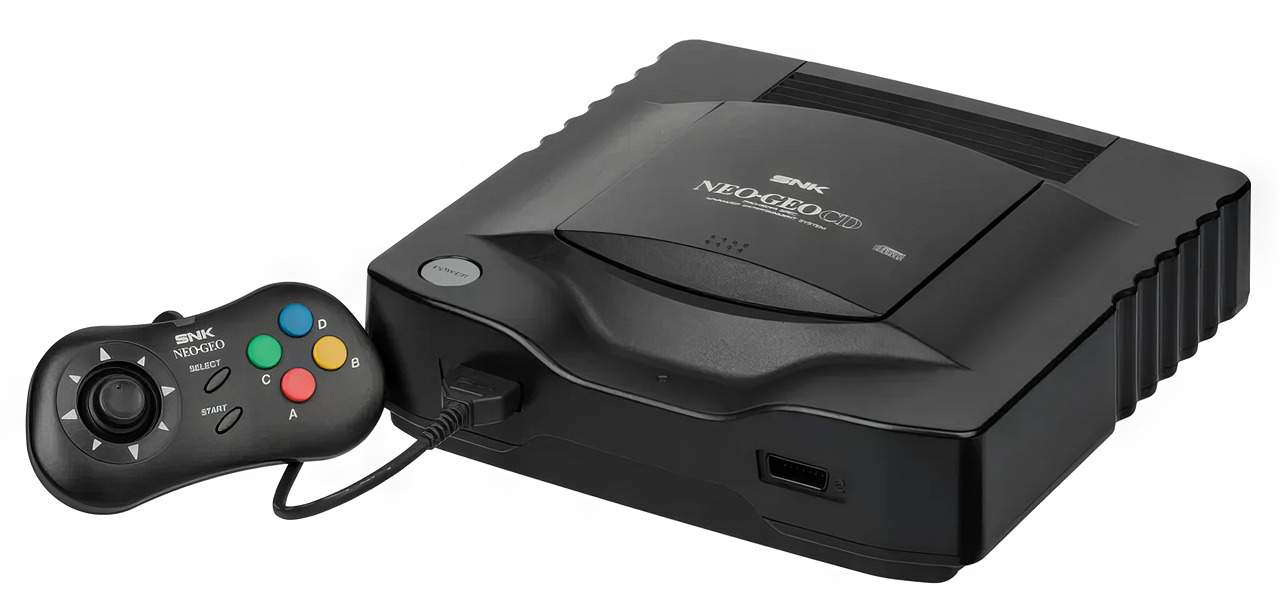
Moving from the Capcom CPS Changer, we find another 1994 treasure that pushed gaming boundaries. The Neo Geo CD aimed to bring the excitement of arcade games right into your living room.
Its games were top-notch, offering players intense action and graphics that felt like they came straight from a coin-operated machine.
This console was all about quality but came with a hefty price tag. Because it cost so much, not many people had one. Plus, there weren’t enough of them made for everyone who might have wanted one.
And let’s not forget—it went toe-to-toe with giants like Sony PlayStation and Nintendo’s home consoles. With such strong rivals, Neo Geo CD struggled to shine despite its killer game lineup, including fan favorites like “King of Fighters.”.
Unusual Consoles of the Late 90s
Dive into the twilight zone of gaming with late 90s consoles that promised innovation but delivered obscurity, and keep reading to discover how these eccentric machines left their mark—or didn’t—on the world of video games.
Tiger R-Zone (1995)
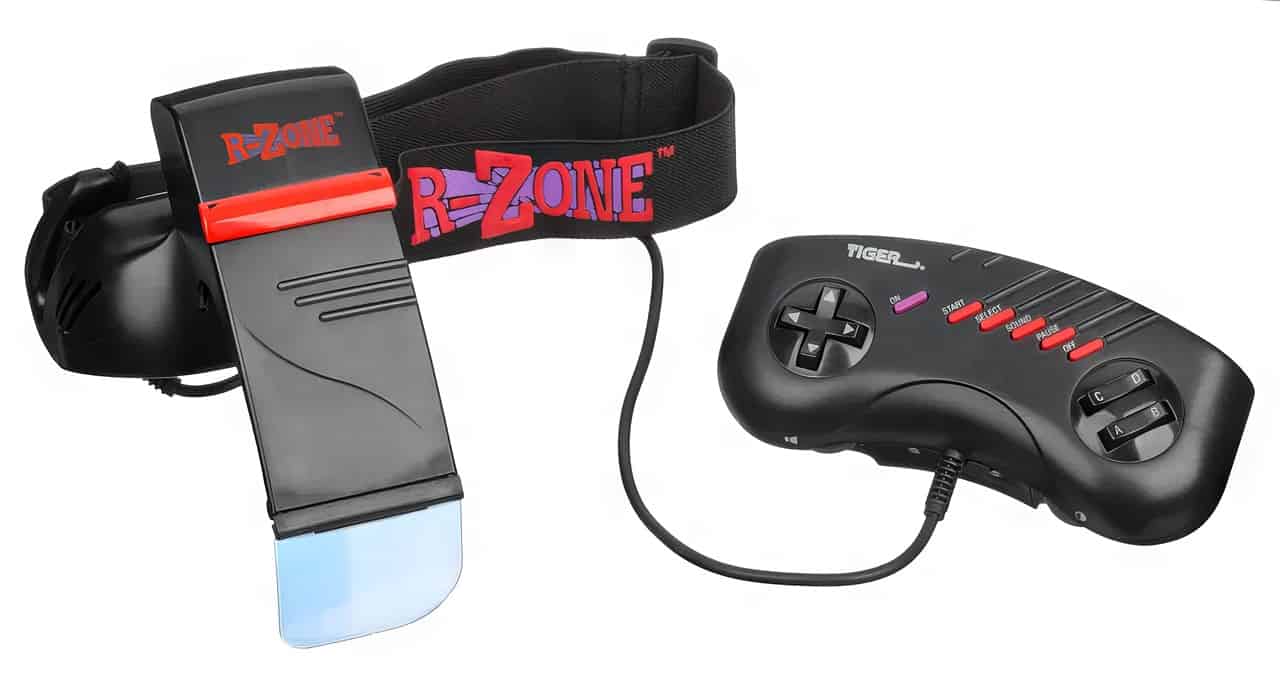
The Tiger R-Zone hit the shelves in 1995, trying to bring a taste of virtual reality to gamers. It looked pretty strange with its red headset that you had to strap over your head. This console let players swap out game cartridges and try different ways of playing, like using a visor attachment for a more up-close experience.
Even though it was unique, not many people bought it.
This early VR attempt didn’t really take off like Tiger Electronics hoped. The games for the R-Zone were simple and only showed up in red on the screen. Because of this, most gamers stuck with their Game Boys or waited for the next big thing in handheld gaming consoles.
Now, R-Zone is just a blip in video gaming history that some collectors look for when they want something unusual to add to their collection.
Atari Jaguar CD (1995)
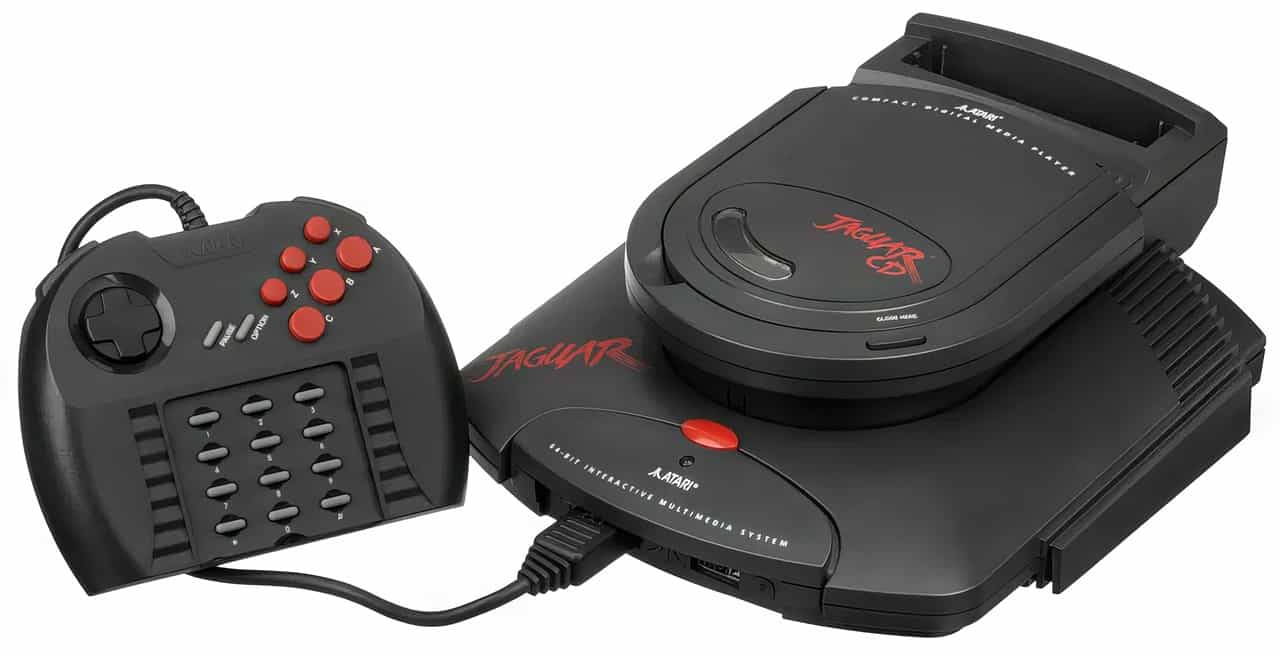
The Atari Jaguar CD hit the shelves in 1995, aiming to amp up the gaming experience with its new CD format. It let players dive into bigger and more complex games. But this add-on for the Atari Jaguar console was a tough find, making it a treasured piece for game hunters today.
Only 11 games ever came out for this machine before it waved goodbye in 1996. Its hefty price tag and scarcity on store shelves played a part in its early exit. Yet, even with these bumps, the Jaguar CD has earned a special spot among retro gamers.
These fans love its unique style and rare game collection. If you’re into collecting or just curious about lost treasures of gaming history, keep an eye out for this one!
Game.com (1997)
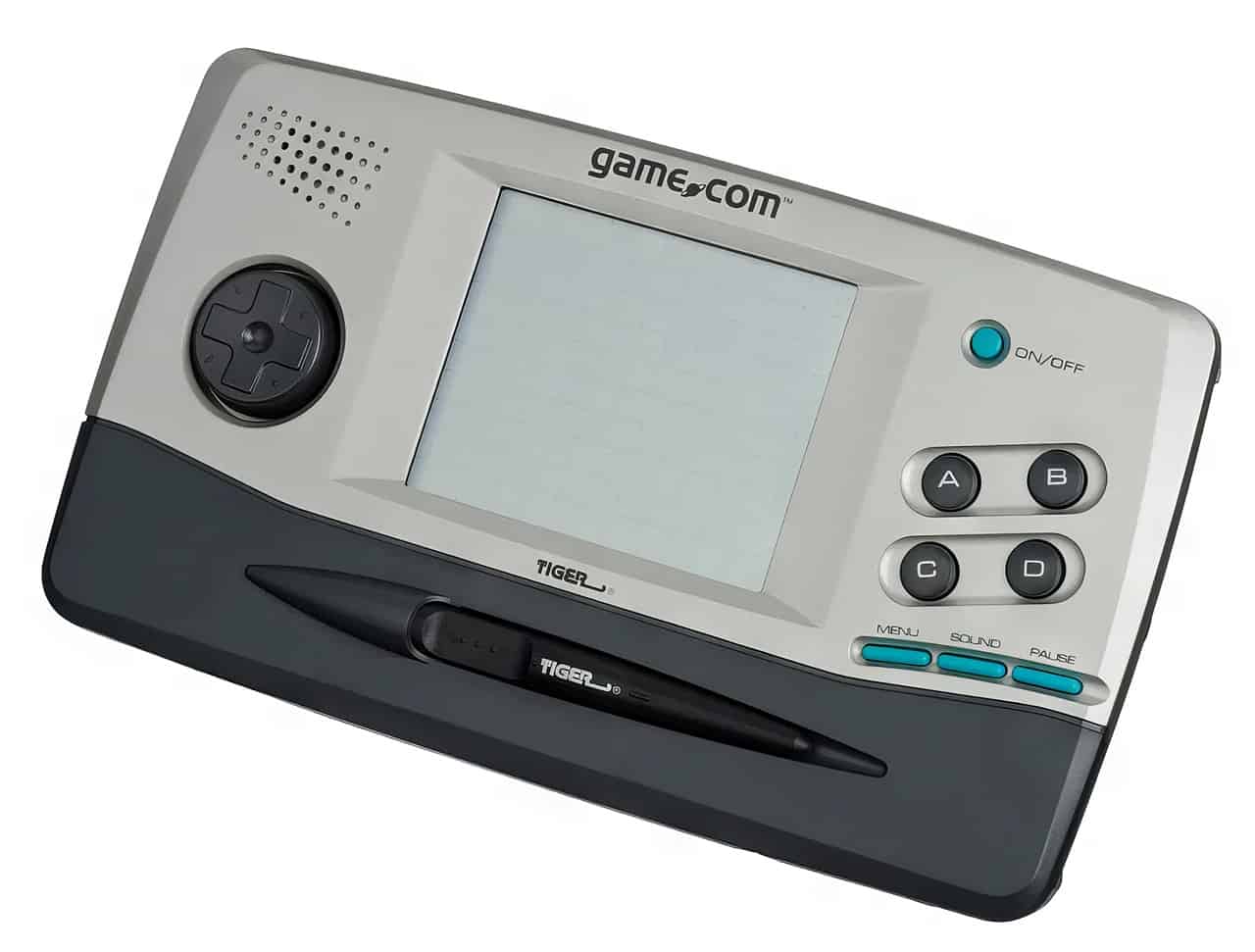
Moving on from the Atari Jaguar CD, let’s talk about Game.com, a real oddball in the handheld console world. In 1997, this gadget tried to take on the big guys like Nintendo’s Game Boy.
It was ahead of its time with a touchscreen and could even go online with a special modem cartridge. But it wasn’t just games—Game.com had tools like a calendar and an address book.
Sadly, not many gamers got their hands on it. Even with cool games like Sonic the Hedgehog and Mortal Kombat, Game.com didn’t make many friends. You could hook up two consoles for head-to-head battles, which was pretty neat back then.
However, poor support from other game makers and weak ads meant most gamers never added it to their collection before it disappeared in 2000.
The New Millennium’s Lesser-Known Game Consoles
As we launched into the 2000s, tech companies bet big on blending mobile and gaming worlds, resulting in eclectic devices that challenged the status quo. From phones masquerading as handheld consoles to ambitious systems ultimately crushed under the weight of industry giants, this era was a treasure trove of innovation and cautionary tales alike.
Nokia N-Gage (2003)
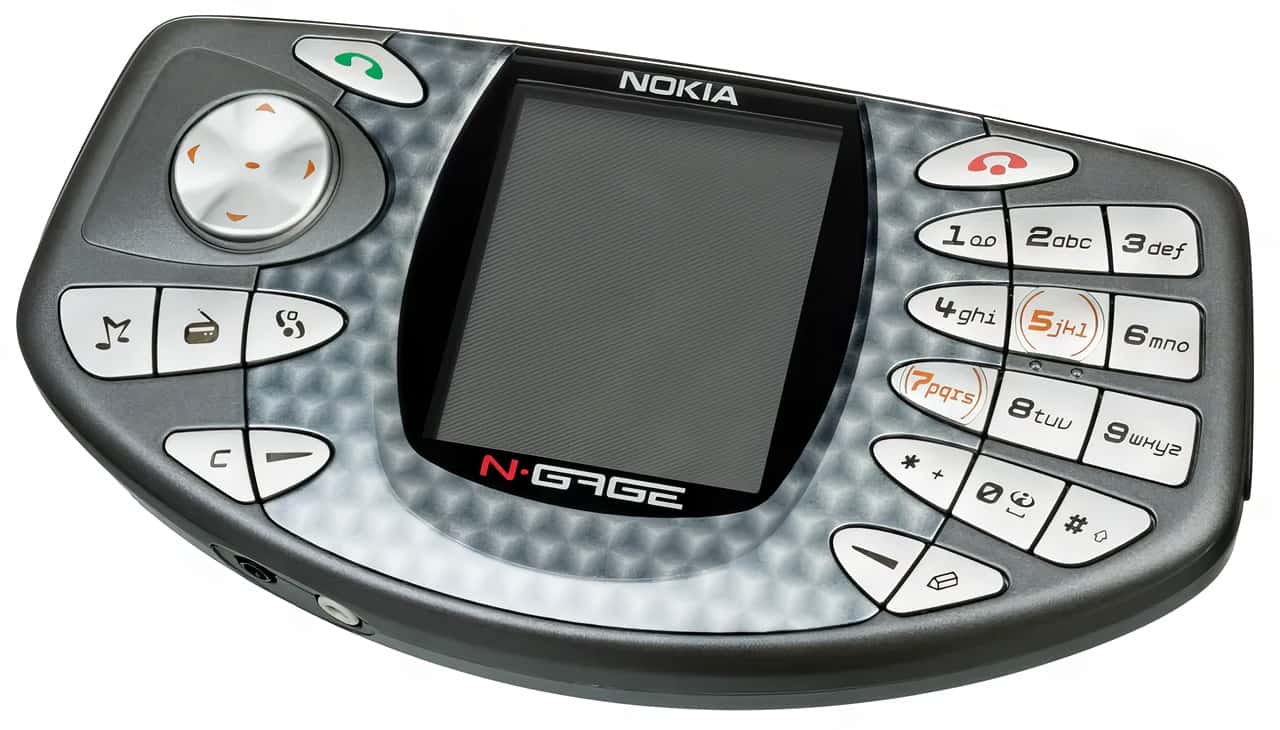
The Nokia N-Gage came out as a cool mix of a phone and game device. It looked different, with the screen in the middle and keys to play games on each side. You could slip in game cartridges and even play with friends using Bluetooth.
This gadget aimed to shake up how we think about mobile gaming.
But, going head-to-head with giants like the Game Boy Advance was tough. The N-Gage had big dreams but didn’t catch on as well as Nokia wanted. By 2005, they stopped making it. Still, for those who had one, it was a neat piece of gaming history in your pocket!
Gizmondo (2005)
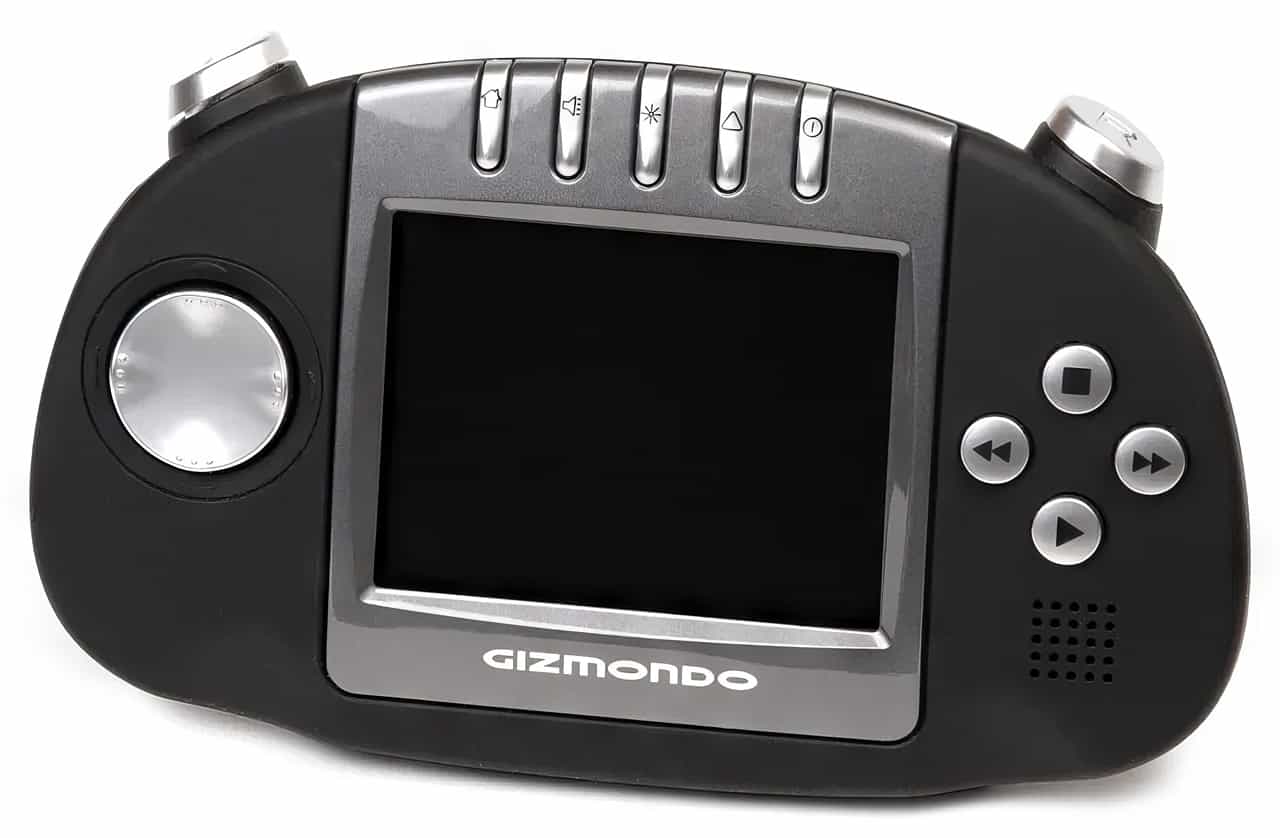
Moving on from the Nokia N-Gage, another gaming device that tried to shake things up was Gizmondo. It came out in 2005 and promised a lot of cool features. This little machine could play games, send messages, and even had GPS built-in! But it wasn’t just about fun – its creators wanted to make money by showing ads too.
Sadly, not many gamers knew about Gizmondo or got their hands on one. It was pretty expensive and didn’t have a big list of games to choose from.
Gizmondo’s story is wild. The company behind it faced big troubles with money and law stuff which didn’t help its success at all. Some people even say the tale of how it went down is more interesting than the games on Gizmondo itself! Despite being part of a new generation of game consoles, this gadget ended up as a hidden gem most players missed out on exploring.
Mattel HyperScan (2006)
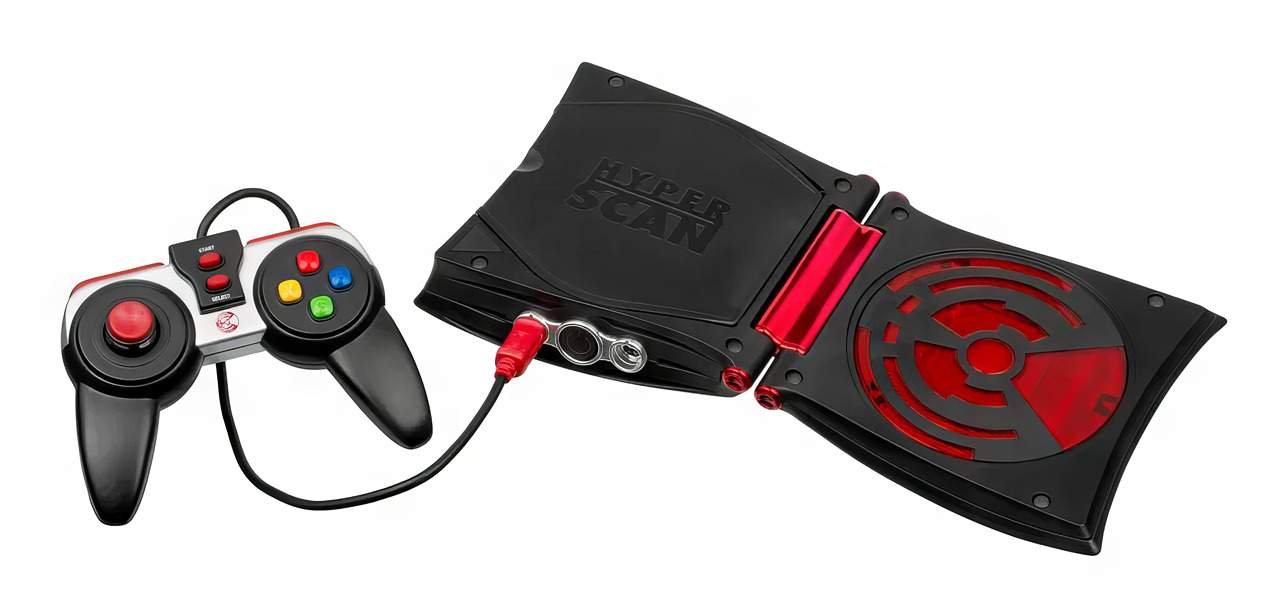
Jumping right from Gizmondo’s ambitious features, we land in 2006 with Mattel HyperScan. This system tried something pretty cool for its time. It mixed cards with game discs and used magic-like RFID technology to change up the games as you played.
Sadly, not many players got their hands on this one. The HyperScan aimed at kids but didn’t hit the mark, leading to a quick goodbye from store shelves. Even though it packed a 32-bit punch under the hood, this console stays hidden in gaming’s back closet.
If you find one, it’s like uncovering a secret level in video game history!
The Second Decade’s Obscure Video Game Consoles
Dive into the 2010s, where even amidst a sea of gaming giants, some plucky consoles dared to defy the norm. Buckle up as we take a quirky trip through an era that brought forth curios like Zeebo and Ouya, each with their own tale of ambition and underdog charm.
Zeebo (2009)
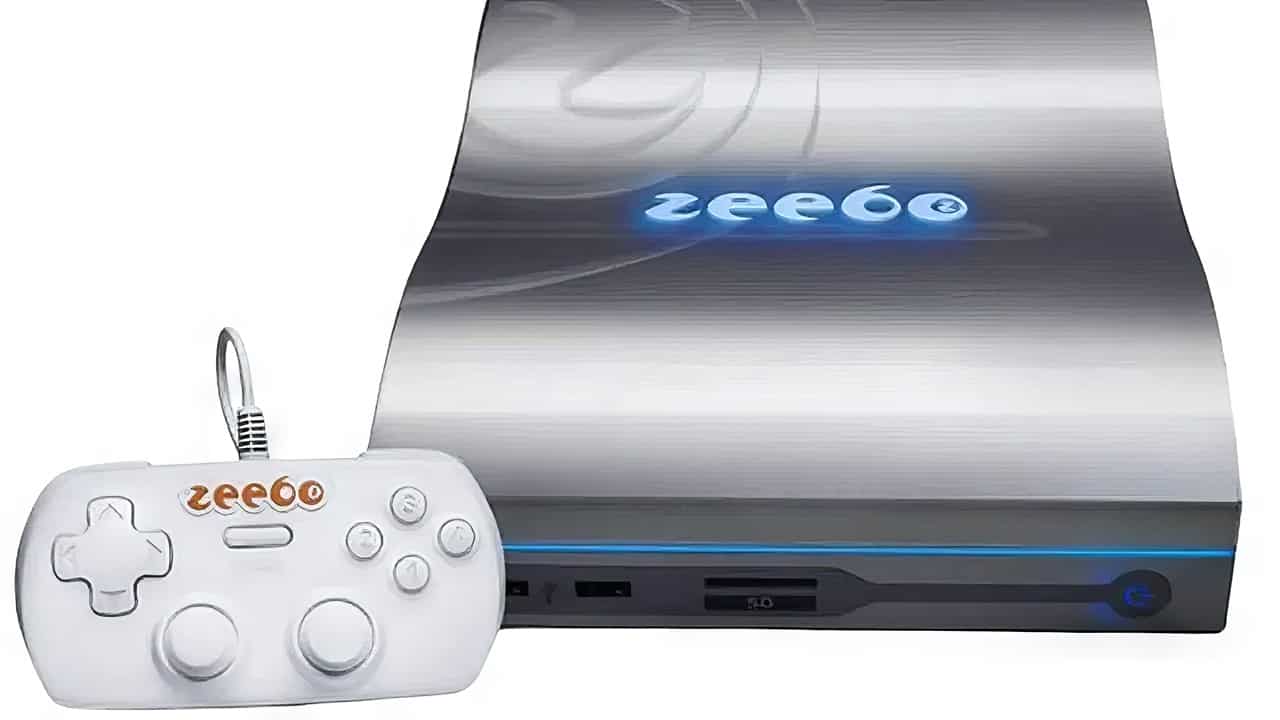
Zeebo hit the game world in 2009 as Brazil’s answer to affordable gaming. Not just for Brazilians, it found its way to Mexico and China too. The console used the BREW platform, a bit like what some cellphones ran on back then.
It kept things simple, but that meant big titles and fancy graphics weren’t its thing.
Gamers didn’t hear much about Zeebo outside of these countries. There wasn’t a lot of noise or games made for it. Still, it’s a cool piece of video game history with its own set of challenges and fun – if you can get your hands on one!
Ouya (2013)
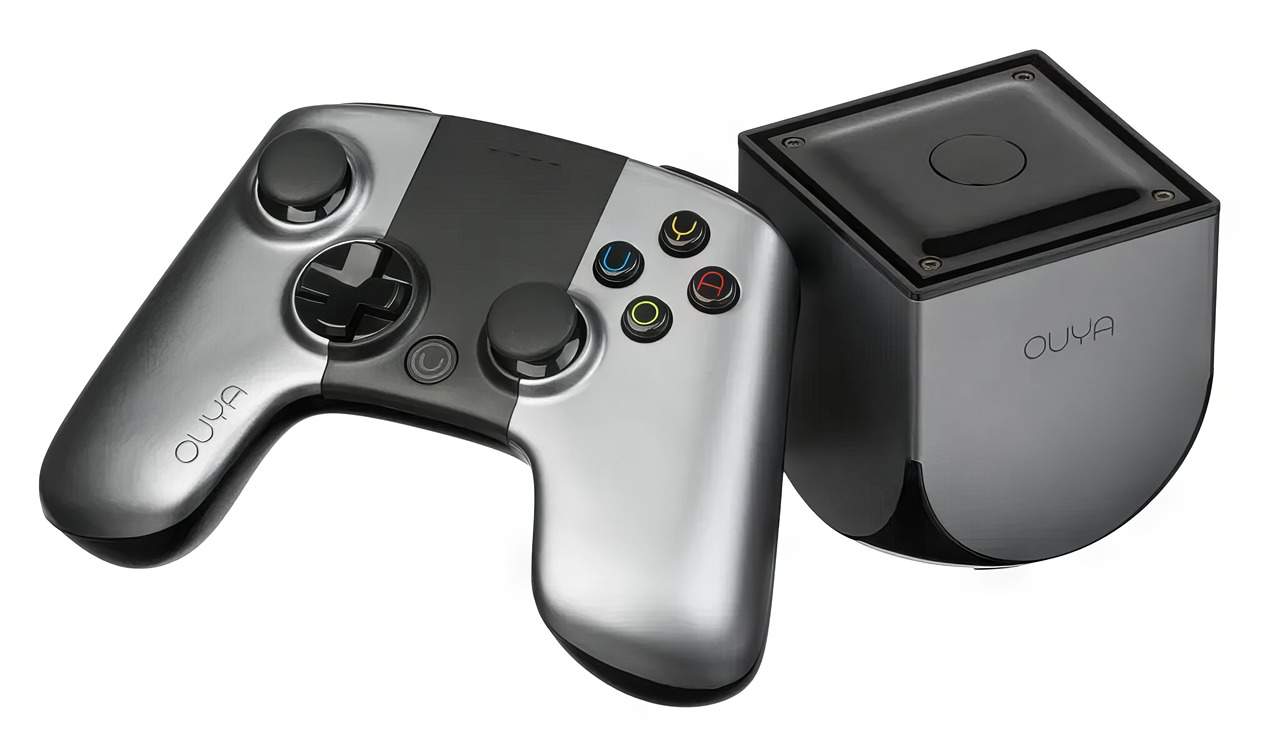
The Ouya hit the scene in 2013, and it shook things up with its small cube design. It was not like the big game consoles that most gamers knew. The cool thing about Ouya was that it aimed to make money gaming more open for everyone.
Its online store had lots of games you didn’t see on PlayStation or Nintendo systems.
Ouya’s creators wanted to free the games fund from usual rules. They hoped indie developers would bring new and exciting games to their console. Some folks loved finding these hidden gems on Ouya because they were different from famous video game cheat codes, which made them special in a world full of cheating in video games.
Uncommon Games for Obscure Consoles
Dive deep into the vaults of gaming history to unearth the quirky titles that once called these forgotten machines home. Prepare for a treasure hunt through the pixelated underbrush, where hidden classics await the lucky few who venture off the beaten path.
Kolibri for Sega 32X
Kolibri is a game for the Sega 32X, and it’s not like other games you’ve played before. You control a hummingbird flying around in beautiful places. The colors pop, and everything looks bright.
This makes Kolibri stand out on the Sega 32X.
Many people don’t know about this console or this game. Playing Kolibri is fun because it’s different from usual games with fighting or car racing. Finding games like this one is cool for gamers who love to see what all video game systems can do.
Mine Storm for Vectrex
From exploring the colorful world of Kolibri, let’s dive into another hidden video game gem. Mine Storm on Vectrex takes you into the depths of space with its fast and bright blasts.
This game is built right into the Vectrex console, so no need to search for a cartridge or download anything extra.
In Mine Storm, players zoom around shooting at mines in space. The action keeps you on your toes, and since it’s part of the Vectrex system, you can jump into this space adventure anytime.
It’s one cool reason why owning a Vectrex feels special!
Final Reflections on the Evolution of Gaming Devices
Exploring strange video game consoles is like a treasure hunt. Each one has its own special story. They remind us that gaming history is full of surprises. Let’s keep looking for these hidden gems.
Who knows what other cool old games we might find?
FAQs About Obscure Video Game Consoles
What are some obscure video game consoles most people don’t know about?
Some lesser-known consoles include the Virtual Boy, Wonderswan, Philips CD-I, Nintendo 64DD, Game com, and NeoGeo Pocket Color.
Why are these video game consoles considered hidden gems?
These consoles may have had limited releases or did not sell well, but they offer unique games like “Zelda: The Wand of Gamelon” and cool features that make them special to collectors and fans of retro games.
Can you play any famous games on these obscure systems?
Yes! Some of these systems have their own versions of popular games like “Street Fighter II Turbo: Hyper Fighting” on the SNES controllers compatible platforms or “Hotel Mario” on the Philips CD-I.
Did any of these unknown consoles try new technology?
Yes! Systems like Tiger Telematics’ Gizmondo included GPS for augmented reality experiences, while others like Nintendo’s Virtual Boy tried early virtual reality with its headset.
Are there strange video game gadgets besides the consoles themselves?
Certainly! There were gadgets such as barcode scanners for Barcode Battler and a stylus for handhelds like the Nintendo DS, which added new ways to play your games.
Are there modern equivalents to these older obscure gaming devices?
Today, we see innovations from companies like Niantic with Pokémon Go, introducing new styles of gameplay using smartphones that provide portable gaming adventures outside traditional handheld video game console designs.
Additional Interesting Facts About Obscure Video Game Consoles
- Philips CD-i: This console boasted Full Motion Video (FMV) for more realistic games.
- WonderSwan Color: Created by the same designer who brought Game Boy to life.
- Bandai’s Pippin: A console by Apple that tried to merge gaming and computers.
- An odd gaming console called Hyperscan used RFID cards to load games.
- Virtual Boy, Nintendo’s failed venture into VR, only had a total of 22 games.
- Fairchild Channel F was the first console that used interchangeable game cartridges.
- Sega Mega Jet was only available on Japanese Airlines.
- FM Towns Marty was the first gaming console with a built-in CD-ROM.
- Pioneer LaserActive was a high-end gaming console that played games on Laserdisc.
- Amstrad GX4000 only had 27 games in its library.
- Bally Astrocade at release was sold as a home computer system rather than a console.
- Gameplay for Vectrex was black and white. Color overlays could be placed onto the screen for color effects.
- Casio Loopy was marketed exclusively for girls.
- Sega 32X could be attached to a Sega Genesis to upgrade its hardware.
- The Neo Geo AES and Neo Geo CD had exactly the same hardware; the only difference was the CD drive.
- The Sega Saturn had dual central processing units.
- The RDI Halcyon gaming console had an original price point of $2500.
- Kishi for Stadia turns smartphones into gaming consoles.
- Playdate is a handheld console with a crank controller releasing soon.
- Panasonic M2 never got released but was rumored to be twice as powerful as the N64.
- Commodore 64 Games System only had a single joystick port.
- Magavox Odyssey was the first commercial home video game console.
- The Semi Tech Micro Lightspan was educational-focused with software designed around a curriculum.
- The Kickstarter-funded Ubuntu Edge phone would have been able to be used as a PC and a console.
- The Apple Bandai Pippin’s most popular game was Power Rangers Zeo vs The Machine Empire.
- Nintendo’s first home console was the Color TV Game and it was only sold in Japan.
- Atari’s first product wasn’t a console, but Pong in arcade format.
- Some Atari Jaguar controllers had phone-like buttons.
- Sega SG-1000 and NES were released the same day in Japan.
- The Super A’Can is a Taiwanese console with 16-bit capability.
- The APF M1000 was a cartridge-based video game system that only had 15 games in its library.
- The microvision was the first interchangeable game handheld system.
- Coleco Telstar Arcade had a unique triangular design.
- The Watara Supervision was designed to compete with Game Boy.
- The Epoch Game Pocket Computer was released only in Japan.
- The Mega Duck WG-108 (also known as Cougar Boy) was a Game Boy clone.
- The Nuon tried to mix gaming and DVD in one machine.
- V.Smile was an educational gaming console for children.
- NEC PC-FX was only sold in Japan.
- Tonka’s Sega TV console was broadcast through cable.
- The Tiger Game.com was the first handheld console with a touchscreen.
- Milton’s Odyssey was the first gaming console with an analog controller.
- Even though it lacked moving graphics, the Dina 2-in-One could play both ColecoVision and Sega SG-1000 games.
- The Game Wave Family Entertainment System was a family-oriented console that used DVD technology.
- Barcode Battler was a handheld console that used barcodes to create RPG battles.
- Playdia was an interactive anime console.
- The Xavix was a motion-controlled console before the Wii.
- The Adventure Vision was a tabletop console built by Entex.
- Tomy Pyuuta Jr. was released as the Tomy Tutor in the US.
- The Jungle was a handheld console designed exclusively for online gaming and MMOs.
- Pioneer LaserActive required a Mega Drive or a PC Engine module to actually play games.
- Many games featured on Nuon-enhanced DVD players were ports of popular PC games.
- Turbografx-16 was the first console to have a turbo switch on its controller.
- PlayStation 2 has the highest number of games for any console.
- The Odyssey 100 was Pong with minor differences.
- Nichibutsu My Vision was a Karaoke machine that sang Japanese children’s songs.
- RCA’s Studio II console only played in black and white.
- Neo Geo Pocket Color was SNK’s last handheld console.
- Pokemon Mini had a motion sensor built into it for playing games.
- Epoch Cassette Vision was the best-selling console in Japan in 1981.
- Amiga CD32 was a CD-ROM-based system with 32-bit power.
- NEC PC-6001 was launched in Japan in 1981 and supported by a software library of 400 games.
- VideoSmarts Console was one of the first interactive educational video games on the market.
- LeapFrog Leapster was a handheld gaming console aimed at 4 to 10-year-olds.
- View-Master Interactive Vision was an educational console marketed for preschoolers.
- Memorex VIS was a CD interactive multimedia appliance.
- Android-based console Mad Catz M.O.J.O. allows for streaming games, media, and other entertainment.
- ZAPiT Game Wave Family Entertainment System was the first console released by a Canadian company in over a decade.
- Zeebo was the first 3G wireless console.
- Children’s Discovery System by Vtech was an educational gaming console.
- R-Zone by Tiger Electronics used red LCD game cards.
- The Nintendo Switch lite is designed purely for handheld play.
- Control-Vision by Hasbro was a VHS based console.
- The Game Pocket computer could store up to 26,000 characters on a cartridge.
- Hartung Game Master was a Gameboy rival with superior screen quality.
- The educational Leapster Explorer could be connected to a PC or Mac for expanded gameplay.
- Mattel’s Intellivision console was the first 16-bit game system.
- The first product VTech released was an LED game called ‘Electronic Number Muncher’.
- The Color TV-Game series has the highest sales of the first generation of video game consoles.
- Magnavox, the maker of the Odyssey, sued Atari for patent infringement.
- Microvision was the very first handheld game console using interchangeable cartridges.
- Intellivision was the first console to offer downloadable games via its PlayCable adapter.
- Many companies, such as Apple and Mattel, abandoned gaming after the video game crash of 1983.
- PlayStation VR was initially codenamed Project Morpheus.
- Sinclair ZX Spectrum Vega was a console with 1,000 built-in ZX Spectrum games.
- Milton Bradley’s Vectrex had a built-in vector monitor.
- Atari PONG was one of the earliest home game consoles.
- Vtech’s V.Smile introduced educational gaming to kids.
- Zeebo F.C. Foot Camp was the first Zeebo exclusive game.
- The Alligator Hunt game was exclusive to the arcade games platform.
- Adventure on Atari 2600, was the first action-adventure video game.
- “Super Mario 64,” “Pilotwings 64,” and “Saiky? Habu Sh?gi” were the only launch titles for Nintendo 64 in 1996.
- The Amiga CD32 is considered the first 32 bit CD-ROM based console.
- Bung Enterprises created the Game Enhancer device to backup Game Boy and Game Boy Color games.
- N-Gage QD Silver Edition, a game deck also serving as a mobile phone, was released in 2006.
- Commodore 64 was one of the bestselling home computers in history.
- Android-based microconsole, Ouya, was funded through Kickstarter.
- Gameking III boasts of five different contrast levels for playability.
- Mega Man The Wily Wars, originally designed for Sega, was a compilation of Mega Man 1-3 with improved graphics.
- Graphing calculator games, such as TI-83, TI-84 and TI-85 series provided simple video gaming options.
